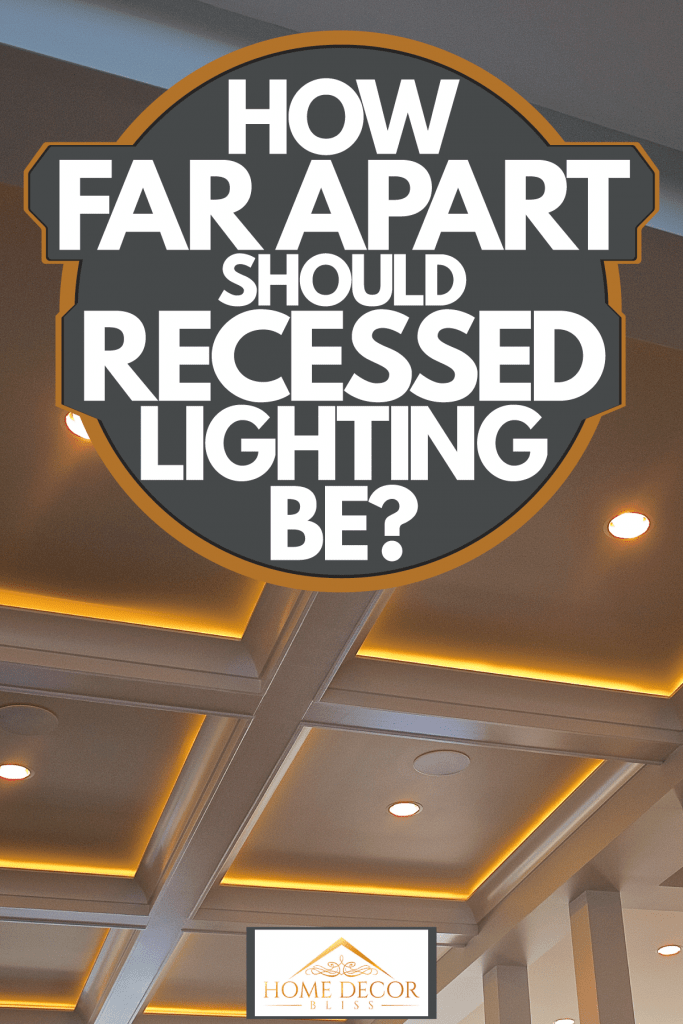Recessed lighting is an excellent alternative to traditional light fixtures. While ordinary fixtures can sometimes add style to your room, they can also be disruptive and unnecessary. Recessed lights simply need to be spaced correctly in order to provide an even amount of light. This is because they are hidden away in the ceiling. But just how far apart should recessed lighting be? For your convenience, we have brought you the answer.
The best distance between your recessed lights is subject to change. It is determined by the purpose of your installation. For example, if you need recessed lights for a wall wash, then the ideal distance is far shorter than conventional living room lighting. If you plan on lighting a typical room, then there is a standard formula to follow. Simply divide the total height of your ceiling in half. The solution is how far apart your recessed lights should be.
Recessed lighting can easily open up a room with a short ceiling. Recessed lights are very versatile, and they require a unique installation. This means that recessed lights have their own rules. Keep reading to learn about the best recessed light size, how many to use, and where to place them.
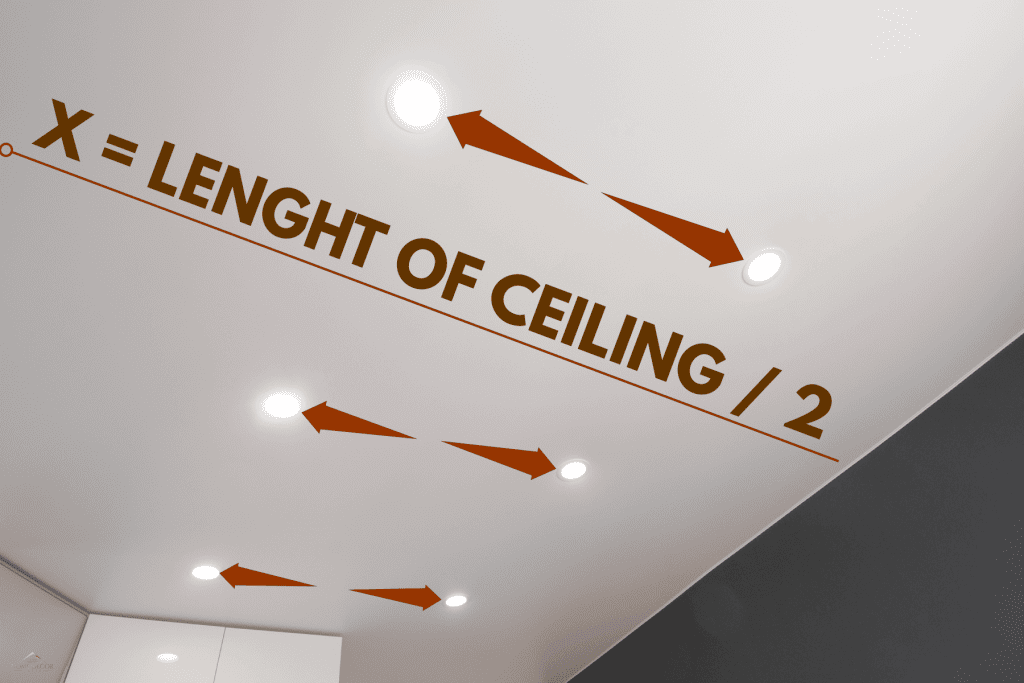
Where should I place recessed lighting?
Recessed lighting can be used for many different purposes. For example, recessed lights can be ideal for kitchens, bathrooms, showers, or any room with a low ceiling. This is because recessed lights can produce light in any desired direction.
Also, recessed lights always conserve space. This is perfect for smaller areas like a shower stall where you certainly can’t use hanging fixtures. Recessed lights can even be used to highlight a particular wall or ornament. You can read this post to learn if you can put recessed lighting in a garage.
We sometimes add affiliate links and content that was curated and created by our team with the help of advanced ai tools to help showcase the best design styles.
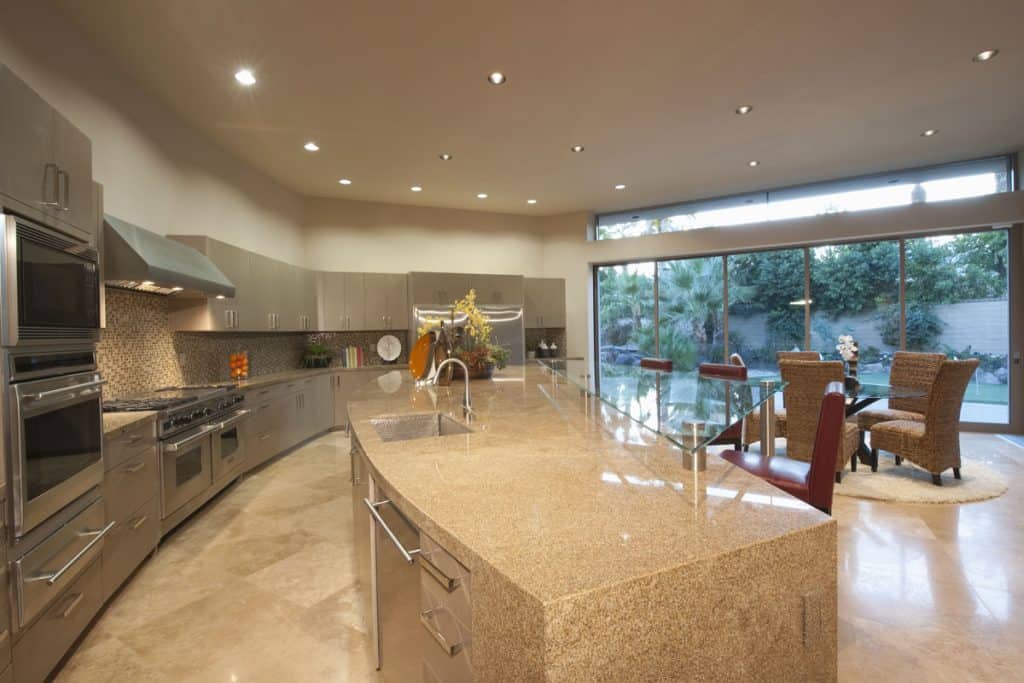
For each purpose, there are rules that can easily help you determine exactly where you should place your recessed lights. This generally involves a basic formula, regarding the relationships between the walls and the lights themselves.
Do I have to use formulas to space out recessed lights?

While math can be intimidating for some, the formulas aren’t difficult and they are absolutely necessary.
This is because manufacturers and other professionals have determined the best way to eliminate shadows. Without proper spacing for your lights, shadows can quickly become an unwanted nuisance, either along the walls or in the corners of your room.
More importantly, you should bear in mind that recessed lights are also called “can lights.” This is due to their unique, conical shape that directs light very differently from traditional fixtures. The conical shape of this lighting can result in leftover shadows.
Even worse, one light can disrupt another when they overlap. The intruding lights will cause certain areas on the ceiling to shine far too brightly. Then, the whole room will have uneven lighting. In fact, recessed lights that are too close together may also create a frustrating glare.
Which formulas should I use to space out recessed lights?
Ceiling height is typically the starting point of any formula. For a general room, you will need to divide the height of your ceiling in half. This is how far apart your recessed lights should be. That rule, which is a crucial place to begin, is also approved by professionals like Home Depot.
However, this cannot be used for the first recessed lights that are closest to your walls. That will result in irritating shadows or conical overlap. Instead, the recessed lights nearest your wall should be spaced around one and a half to three feet away.
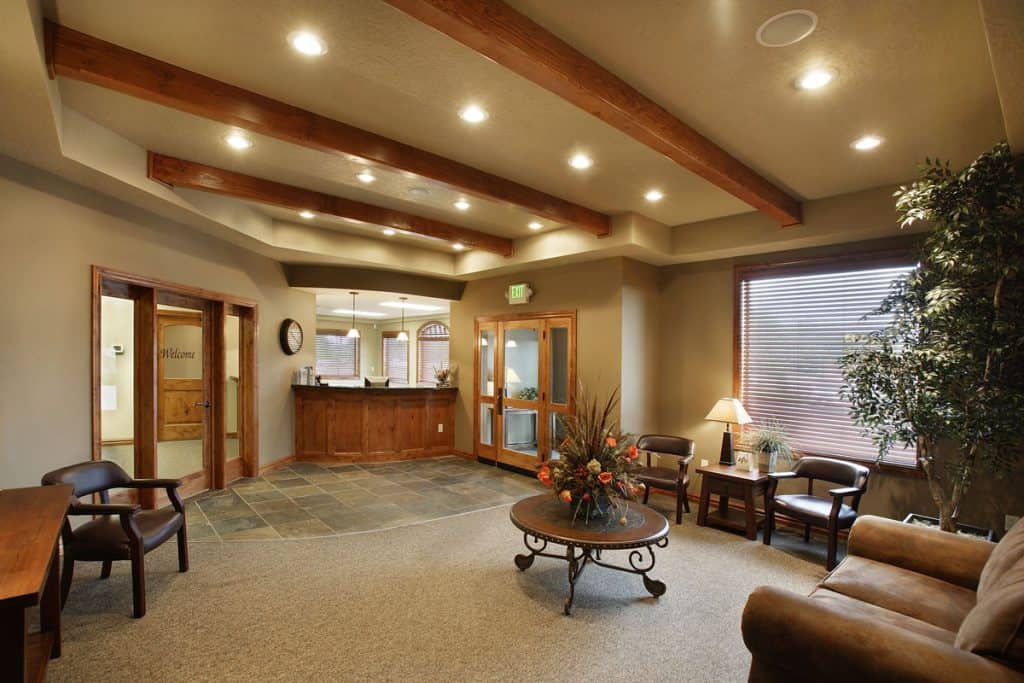
A wall wash means that you are highlighting one specific wall in a room using lights. If you are lining up recessed lights for a wall wash, then there is another rule. The distance between each recessed light should be equal to the distance between the wall and the lights. Remember, placing your lights around a couple feet away from the wall eliminates shadows. So, it is also ideal to place wall wash lighting around one and a half to three feet away from the wall.
If you want to focus on something even more particular than a wall, then the formula changes once more. And again, your ceiling height is imperative. Find the distance between the ceiling and the desired object, then divide by four. The result is how far you should distance your recessed light from the wall. That formula can compensate for unique positions in the room, as opposed to an even distribution of light.
Keep in mind that smaller rooms will require smaller recessed lights. Generally speaking, recessed lights that are four inches in size should be placed four feet apart. Six-inch lights should be placed six feet apart. In other words, the diameter of the lights equals the space between them.
Should I use 4-inch or 6-inch recessed lights?
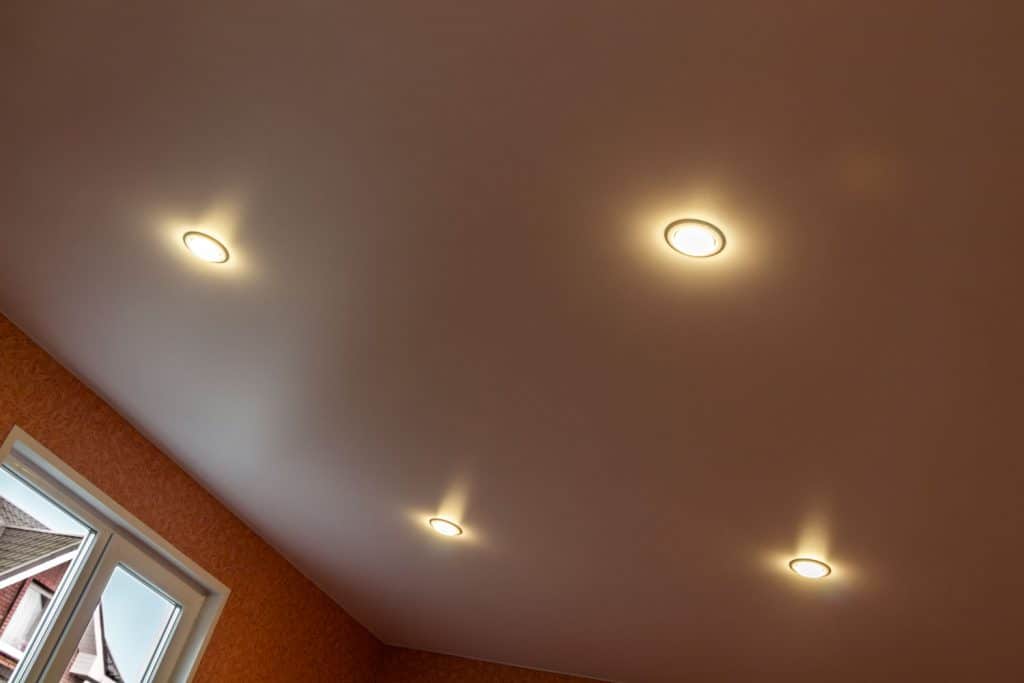
It is a common mistake to believe that smaller recessed lights will not be able to produce enough light. However, any modern LED light can help a smaller fixture to emit more than enough light in certain rooms. Four-inch lights only become less useful in larger areas.
This means that you will need to choose your recessed light size based on the intended purpose.
Click here to find these four-inch recessed lights on Amazon.
If you plan on highlighting a wall or accent piece, then four-inch lights are probably best. This is because they are more likely to be available with the necessary trimming. The trim is the insert and frame that you actually see. You can find very versatile trimming, like the eyeball trim, which allows you to adjust the direction of the light in nearly any direction.
You will probably want to use six-inch recessed lights for a larger room. This is because smaller lights will be visually distracting. They won’t appear to have the same proportions as the room. However, six-inch lights will match the scale of a larger area. And they can also generate more than enough light for a larger area.
Click here to see these six-inch recessed lights on Amazon.
Can you have too many recessed lights?
It is absolutely possible to install too many recessed lights in a room. This is because there is also a formula to consider the maximum amount of space you can allow between each recessed light. You will need to multiply your ceiling height by the manufacturer’s suggested number, which is usually between one half and one and a half.
This may begin to sound overwhelming, but the overall process isn’t as difficult as it seems. And the formula for maximum distance cannot be ignored. When your recessed lights end up too far apart, they are highly likely to leave gouges of shadow between each fixture. This will look terribly uneven in any room.
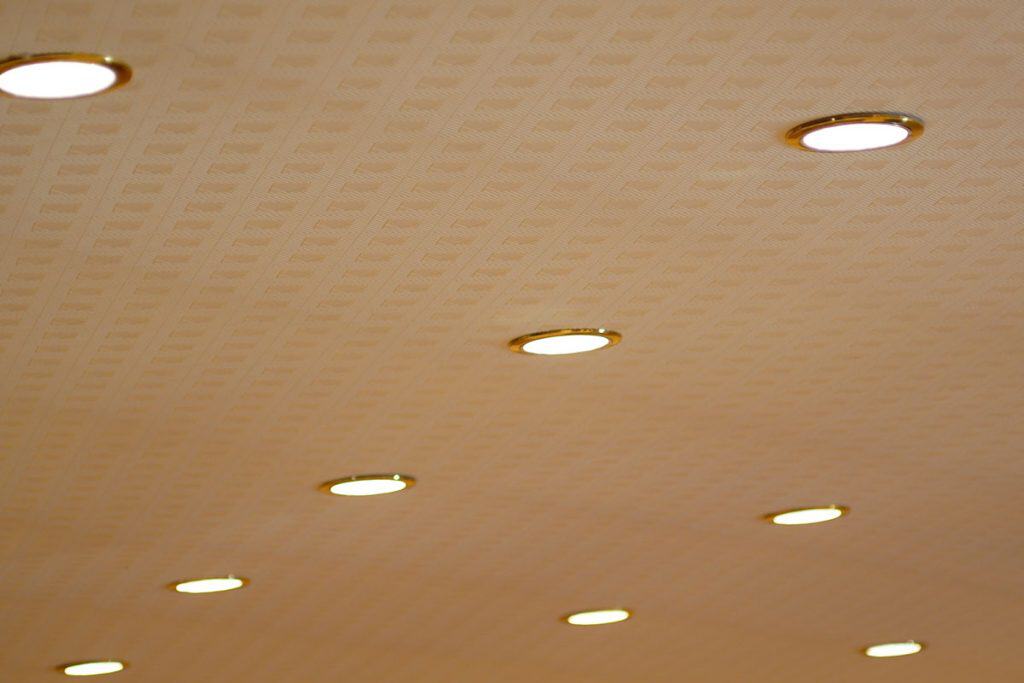
In other words, you cannot space recessed lights too close together, or too far apart. That means you can only install so many lights in any given room. Even though you can mix and match small recessed lights with larger sizes, they will create the same problems. You will create shadows and glares, either along the edges of the room or all throughout the area.
There is an easy starting point to avoid these issues. Calculate the distance between the first recessed lights nearest the walls. This will determine how far apart the rest of the lights should be. If you measure the size of your room, you can then understand how many lights will actually fit.
Besides, using too many lights will begin to look cluttered, which undermines one of the best advantages of using recessed lights.
Should recessed lighting be symmetrical?
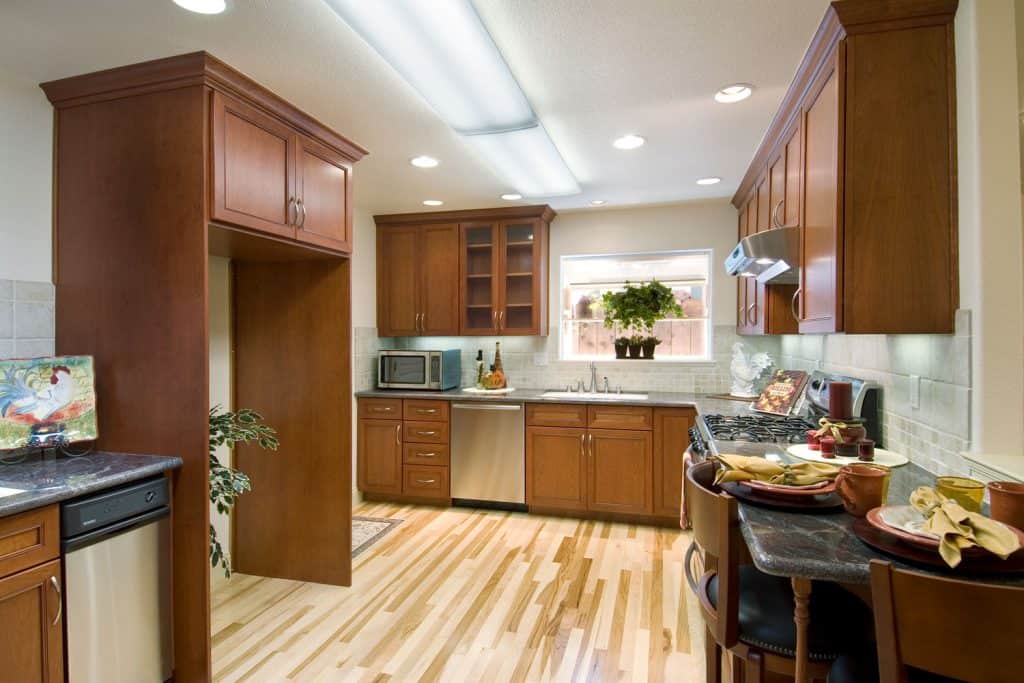
Generally speaking, it isn’t absolutely necessary to keep your recessed lights symmetrical. Sometimes, it may not even be possible to keep the lights symmetrical. For example, at times your new ceiling joists may not be symmetrical either.
Ceiling joists are the horizontal beams that support the lath in your ceiling. Lath refers to the strips of wood that are covered in plaster, and thus create the body of the ceiling. All of this means that your ceiling joists aren’t exactly adjustable. You will have to work around them.
Unfortunately, asymmetrical recessed lights will always draw unwanted attention. This slightly defeats the point of avoiding hanging fixtures. Recessed lights are meant to fade softly into the ceiling, rather than drawing any kind of attention.
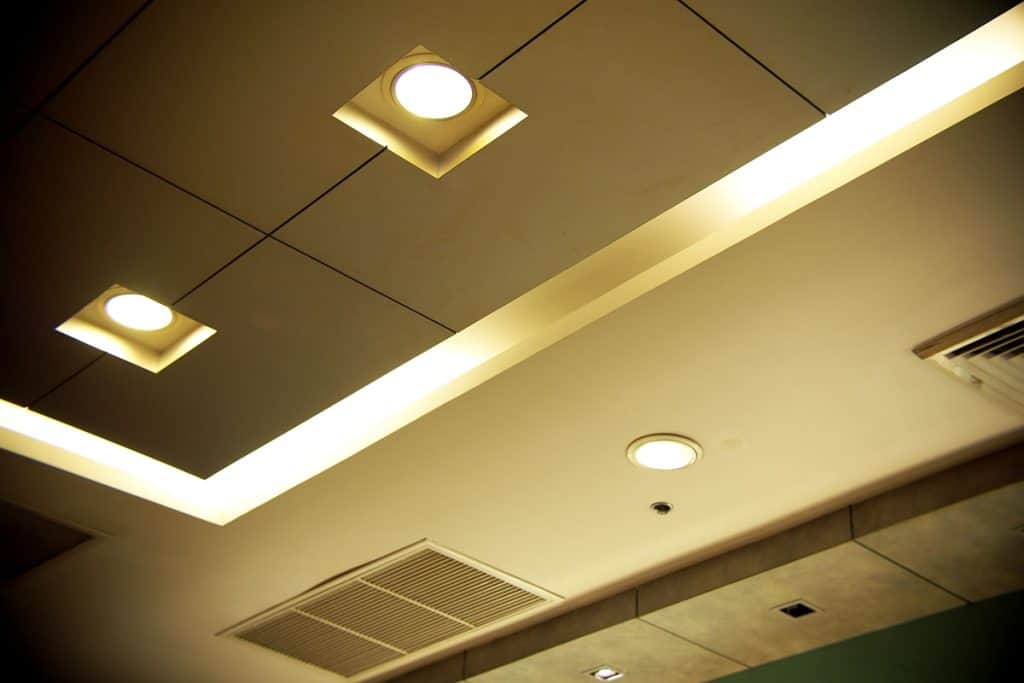
As long as your recessed lights are spaced out according to the proper formulas mentioned above, then perfect symmetry isn’t always essential. This means that a symmetrical installation will be determined by personal preference or practicality.
If you combine a wall wash with general lighting, the formulas won’t create conflict. The spacing will be harder to figure out, and the spacing may become asymmetrical. But the end result can still look nice under the right circumstances. You can read this post to see if light fixtures should match throughout the house.
Summary
Recessed lights are an interesting alternative to conventional hanging lights. But the unique features of recessed lights will also require special attention when you install them. Now that you know how to calculate the space between recessed lights, all you need to choose is which room, wall, or object you’re going to beautify!
